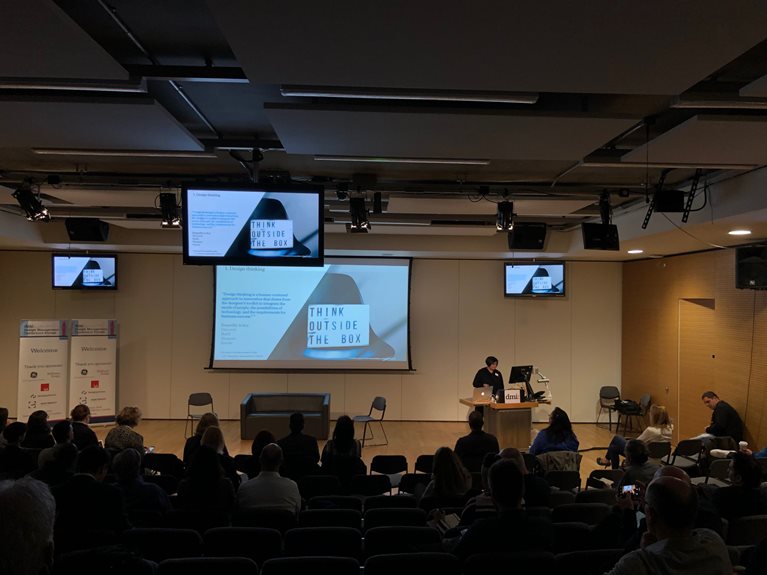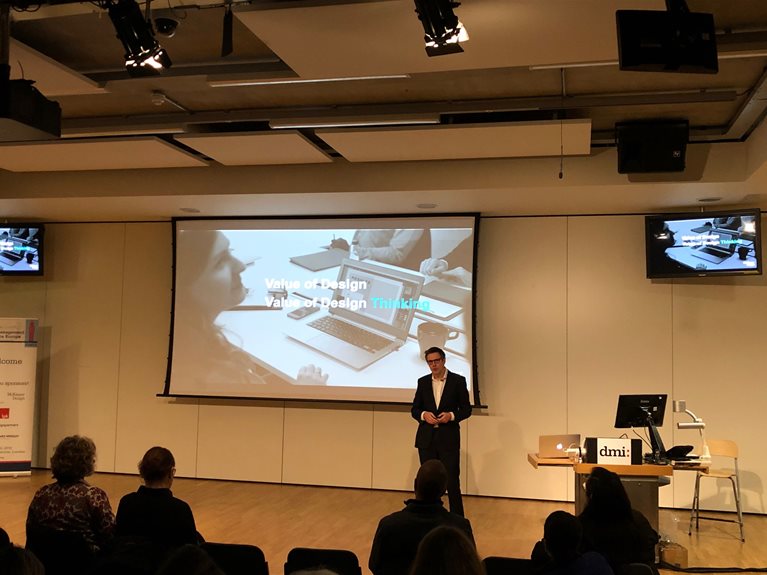The past few years has seen a shift in how business leaders think about design as a strategic tool for growth and innovation. This shift has profound implications for the design community itself, with designers seeking to understand how their expertise and skills can be used to solve new and more complex problems. This emerging paradigm was reflected at the recent DMI (Design Management Institute) conference in London, where design and business leaders from around the globe came together to share their experience and knowledge about the rapidly changing landscape of our industry.

Within this group there was broad agreement on some of the foundations:
- Design has matured and is ready for the next phase.
- Designers are thriving in the non-traditional design environments – inside governments, at management consultancies, and in traditional banks.
- Design is now used in policy making “as the red thread between the ministers and different parties,” according to Andrea Siodmok, Deputy Director of the UK Cabinet Office.
- And as Martin Dowson, Head of Customer Labs at Lloyds Banking Group observes, “It is a glue that aligns all bank employees on one shared vision.”
Designers have proven that they deserve a voice at the highest levels of their organizations. However, for designers to thrive they require special considerations from their leaders. How can today’s leaders create more design-friendly environments within their organizations? On this question the DMI community offered some insights.
Responsibility for design goes all the way to the top
“Who should ultimately be responsible for design decisions within an organization?” This seemingly simple question (posed by Deborah Dawton, CEO of the Design Business Association), inspired many differing points of view. While the answer largely depends on the size, structure, and type of organization, there was broad consensus that ultimately belongs at the highest levels, either with an individual (such as the CEO) or a cohort of cross-functional leaders who act as the top steward for design standards and the voice for design at the highest level. Much like marketing, operations, or engineering, design naturally needs subject-matter experts and specialists to lead and guide multifaceted design teams and programs.

There is a talent gap for top design leaders
Both design and non-design leaders alike agreed on the need for more information on the archetypes for top design leaders – such as Chief Design Officers or equivalent roles – and how design teams are distributed in successful organizations.
One possible solution to addressing this talent gap early is to infuse more management coursework in traditional design education programs, with the goal of incorporating critical thinking and business acumen alongside design craft to make stronger, “T-shaped” design profiles. Continuing education was also seen as a critical area for organizations to invest in, allowing designers to gain new technical skills on the job that allow them to interact with and lead multidisciplinary teams.
In a world of emerging technologies, design values and standards are more important than ever
“Technology is moving faster than ever before. Many services today wouldn’t even exist without mobile technology.” – Marc Jensen, Chief Innovation Officer and Managing Partner, space150
A key theme explored at the Design Management Conference revolved around the limitless opportunities that AI, machine learning, and deep learning are opening up for new types of design. Examples from designers at QuantumBlack, space150, and others included the use of generative technology to design buildings, and the implementation of machine learning as a means to better investigate cures for cancer. But for each breakthrough there are examples of unintended consequences that arise from these emerging technologies. In many cases it is the designers on the front lines who will be held accountable for the effects of their creations. While technology is creating new tools and extending a designer’s strengths, it becomes more critical to adopt and stay true to design principles and standards.
As stated in our recent report, The Business Value of Design, “Design is more than a feeling: it is a CEO-level priority for growth and long-term performance.” At the dmi:Design Management Conference this sentiment was shared broadly; but with greater visibility comes more responsibility. Designers must bring their unique skills to solve new types of problems, and leaders of organizations must take care to ensure their environment is ideal for design to truly work its magic.

